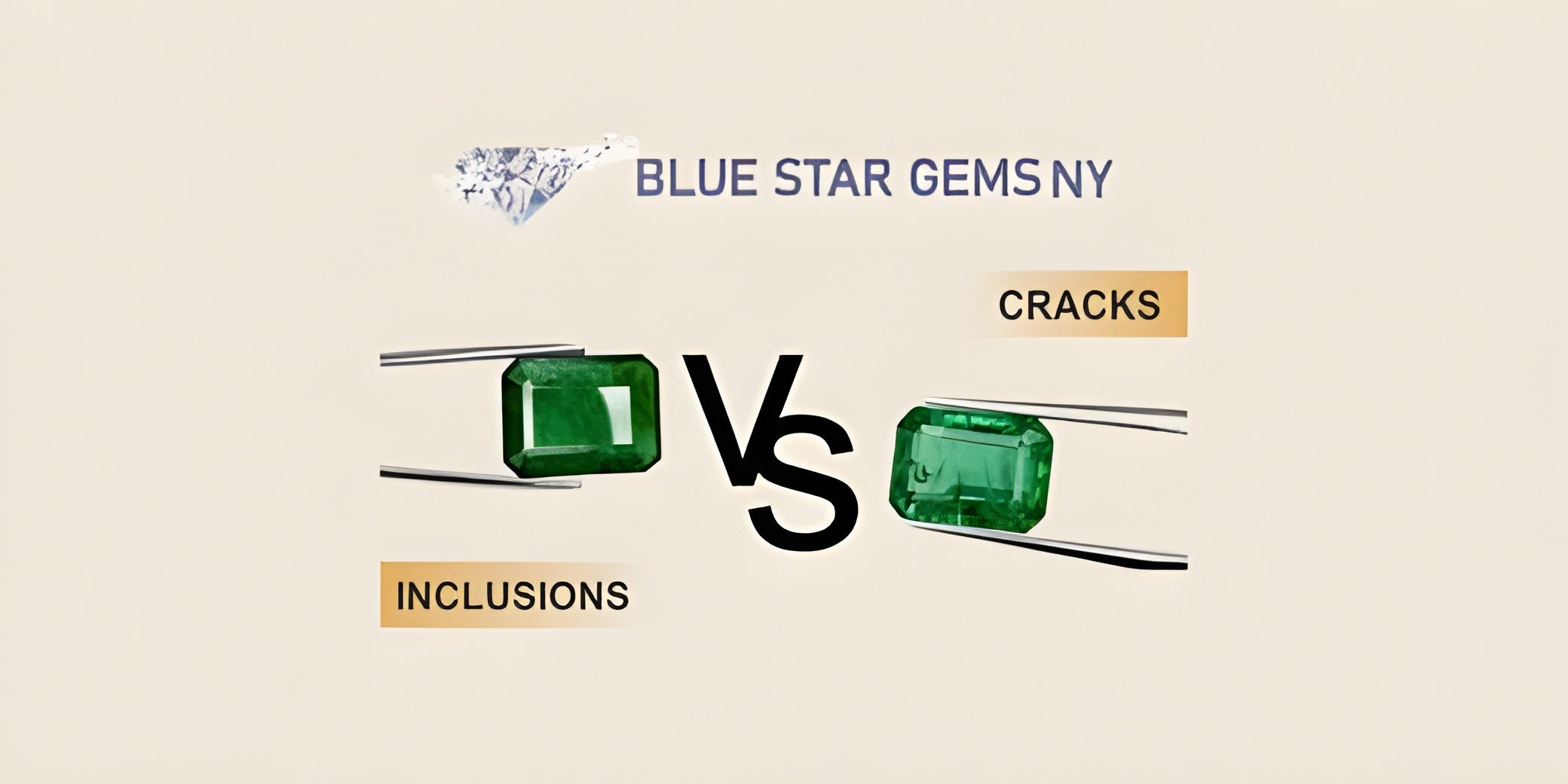In gemology, inclusions and cracks are both types of imperfections that can occur within gemstones, but they have distinct characteristics and origins:
Inclusions:
- Definition: Inclusions are internal features or materials within a gemstone. These may include other minerals, gas bubbles, or liquid-filled cavities trapped during the gem's formation.
- Characteristics: Inclusions can vary greatly in size, shape, color, and visibility. Some may be visible to the naked eye, while others require magnification to observe.
- Types: There are various types of inclusions, such as crystals, feathers (tiny fractures), needles, and clouds. Each type can provide clues about the gemstone's origin and formation process.
- Impact on Value: The presence of certain types of inclusions can affect a gemstone's clarity and transparency, which in turn can influence its value. However, certain types of inclusions, such as those that create desirable optical effects like asterism or cat's eye, can enhance a gemstone's value.
Cracks:
- Definition: Cracks, also known as fractures or fissures, are breaks in the continuity of a gemstone's structure. They can occur internally or extend to the surface of the gem.
- Characteristics: Cracks can vary in size and severity, ranging from tiny hairline fractures to larger fissures that may compromise the gem's stability.
- Types: Cracks can be classified based on their location, such as surface-reaching cracks (which extend from the surface into the gemstone) or internal fractures (which are confined within the gem).
- Impact on Value: Cracks are generally considered detrimental to a gemstone's beauty and durability. They can affect the gem's structural integrity, potentially leading to breakage or further damage. Gemstones with prominent cracks are usually valued lower compared to those with fewer or no visible cracks.
In summary, while both inclusions and cracks are types of imperfections found in gemstones, they differ in their nature, characteristics, and impact on the gemstone's appearance and value. Inclusions are internal features that can range from small crystals to gas bubbles, while cracks are breaks in the gemstone's structure that can extend internally or reach the surface. Inclusions may affect clarity and transparency, whereas cracks can compromise the gem's durability and overall aesthetic appeal.
The main distinction between inclusions and Cracks is that inclusions cannot be seen within a gemstone's interior, whereas cracks are apparent on its surface. Additionally, inclusions usually have little impact on a gemstone's strength, whereas cracks frequently cause a decrease in that quality.
If you need an explanation about whether a gemstone has an inclusion or a crack, don't panic; we are here to assist. When you go to purchase gemstone jewelry, you must have heard your jeweler say these things. And, like most of us, you nod and agree that it signifies something, but the true meaning escapes you.
It is time to alter that. Should your gemstone have cracks? Are inclusions commonplace?
Know what to look for while inspecting your rubies, diamonds, emeralds, and other gemstones. So, the next time you buy a new stone or gem jewelry, walk in like a pro and wow the Johari with your vast knowledge.
How Do You Spot Cracks and Inclusions in Gemstone?
To view cracks and inclusions in the gemstone, use a 10 times fresnel lens or a magnifying lens. You were able to inspect the gemstone's inner composition using the loupe.
Cracks may appear as microscopic divisions or lining cracks, often without sharp edges. The inclusions usually resemble blisters or hazy spots. Cuts, which are curving lines inside the stone caused by strain from external factors, are another visible feature.
How Can You Tell The Difference Between A Crack And An Inclusion In Stone?
There is a fine line between a crack and an inclusion. Many clients struggle to tell the difference. It may also be a key distinguishing factor between a real gemstone and a counterfeit. High-clarity gemstones contain fewer fractures and imperfections and are of superior quality; hence, they are more expensive than others.
Here are a few techniques to check whether your gemstone has fractures or inclusions:
- Surfaces Reach
- Contact
- Constitution
- Stage
- External Factors
Why Do Gemstone Inclusions Matter?
- Genuine gemstones are much more precious than counterfeit or fake ones since they are substantially rarer and more durable.
- Sometimes flaws in your cheap diamond jewelry will be clear at first glance, and other times you may need to look more closely.
- When stones are put in jewelry made of valuable metal, their natural brightness is even more stunning, and flaws make it even better.
- Moonstone inclusions consist of minute centipede-like stress cracks. Moldavite is recognized for containing gas bubble inclusions, as well as grains, cord-like structures, and swirls
Conclusion
Having the knowledge of how to differentiate between a Crack or an Inclusion can help you in grabbing an authentic piece while purchasing an alluring piece of Wholesale Gemstone or Gemstone Jewellery. The chance of obtaining a fake gemstone would decrease if you chose a reliable seller. Natural gemstones that are placed in 925 Sterling Silver Jewelry are available at Blue Star Gems. You may grab a gorgeous Aquamarine, Tanzanite, Pink Morganite , Peach Morganite or any other Gemstone that's a good fit for you, we have a wide range to choose from.




